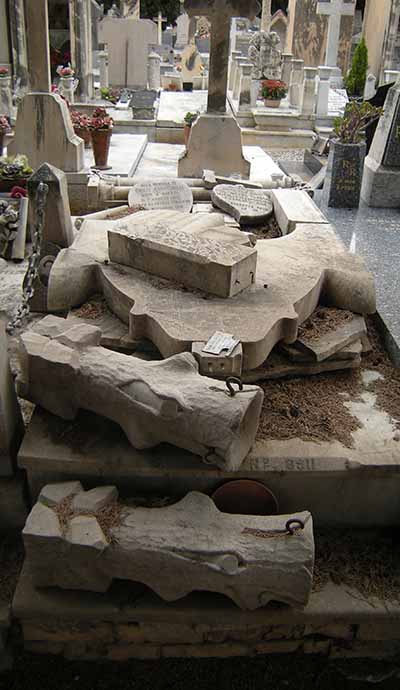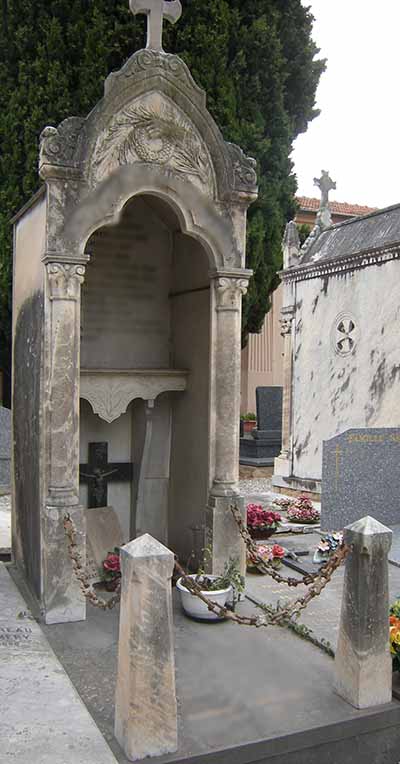|

Agostinelli's tomb in its current state of advanced disrepair

What Agostinelli's tomb could look like once restored
|
The Société des Amis de Marcel Proust is launching a fundraising campaign for the restoration of the tomb of Alfred Agostinelli, a key figure in the life and work of Marcel Proust.
Alfred Agostinelli, born in Monaco on October 11, 1888, is well known to Proust enthusiasts as both the chauffeur and personal secretary of the writer. He notably pasted paperoles onto the proofs of Du côté de chez Swann and typed Le Côté de Guermantes I. Most importantly, he is the main inspiration for the character of Albertine in À la recherche du temps perdu. His departure from Proust's home inspired La Prisonnière, and his tragic death in a plane crash in May 1914 gave rise to Albertine disparue.
Alfred Agostinelli is buried in Nice, alongside his mother, his companion Anna Square, and his half-brother, Étienne Vittore.
However, for several decades, his tomb has been in a state of total neglect. Today, almost nothing remains of the original grave, although some elements of the chapel have been preserved. Since 1971, the city of Nice, unable to find any descendants of Alfred's father, the original concession holder of the tomb, has considered demolishing the ruined grave and transferring the remains to the ossuary.
Thanks to writer and researcher Jean-Marc Quaranta, during his investigation for his book Un Amour de Proust, the historical significance of this tomb was brought to light. He obtained a delay to locate descendants. These descendants, although unaware of their connection to Alfred Agostinelli and Marcel Proust, agreed to the restoration but could not cover the costs, as family ties had been severed since 1920.
Faced with this situation, the Société des Amis de Marcel Proust decided to act to preserve this unique heritage and pay tribute to this dear friend of Proust, of whom the writer said he was, along with his father and mother, "the being he had loved the most."
Campaign Objectives:
* Restore Alfred Agostinelli's tomb to its original state, based on preserved elements and period photographs;
* Preserve an essential place of memory for Proust enthusiasts and literary history;
* Prevent the destruction of this grave, threatened by its state of neglect.
Current state of the tomb: The tomb is currently in ruins, with only a few remnants of the chapel remaining. Restoration will restore dignity and historical significance to this site.
Envisioned state after restoration: The grave will regain its original appearance, as documented in preserved photographs, and will become a place of reflection and memory for admirers of Proust and enthusiasts of his work. By participating in this fundraising campaign, you contribute to preserving a piece of literary history and paying tribute to a man who profoundly influenced the life and work of Marcel Proust.
 |
Various rewards are reserved for donors based on the amount of their contributions. As the Société des Amis de Marcel Proust is recognized as a public utility, donations it receives are also tax-deductible up to 60% for corporate tax (and 66% for income tax), if paid in France.
|

If you already have an account on the association's online store, please note that this account is not valid on this subscription site. You have the option, though not mandatory, to create a new account specifically for this fundraising site. |






